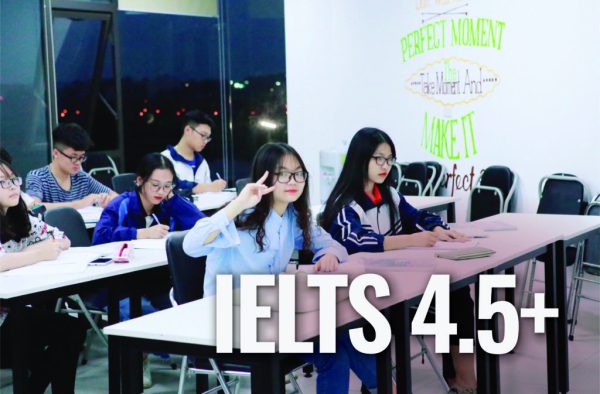Nhận tư vấn về lộ trình học
Bài luyện thi tổng hợp IELTS Reading – Bài 04
27 Tháng 12, 2022 | 679 lượt xem
Tổng hợp các đề luyện thi IELTS Reading sát thực đề thi chính thức sẽ là nguồn tài liệu ôn luyện hiệu quả nếu bạn đang cần cải thiện kỹ năng Đọc của mình. IELTS Reading là kỹ năng bạn hoàn toàn có thể nâng cấp nhanh chóng chỉ cần chăm chỉ ôn tập và thực hành trên bộ tài liệu những bài luyện thi dưới đây !

Danh mục
- Bài luyện Reading 04 bổ trợ kỹ năng Đọc trong kỳ thi IELTS hiệu quả
- Xem thêm tài liệu các bài luyện thi tổng hợp IELTS Reading khác : tại đây
- Xem thêm các bài luyện thi tổng hợp IELTS Speaking khác : tại đây
- Xem thêm các bài luyện thi tổng hợp IELTS Writing khác : tại đây
- Xem thêm các bài luyện thi tổng hợp IELTS Listening khác : tại đây
- Xem thêm tài liệu các bài luyện thi tổng hợp IELTS Reading khác : tại đây
Bài luyện Reading 04 bổ trợ kỹ năng Đọc trong kỳ thi IELTS hiệu quả
You should spend about 20 minutes on Questions 27-38 which are based on Reading
Passage 4 below.
A Workaholic Economy
For the first century or so of the industrial revolution, increased productivity led to decreases in working hours. Employees who had been putting in 12-hour days, six days a week, found their time on the job shrinking to 10 hours daily, then finally to eight hours, five days a week. Only a generation ago social planners worried about what people would do with all this new-found free time. In the US, at least it seems they need not have bothered.
Although the output per hour of work has more than doubled since 1945, leisure seems reserved largely for the unemployed and underemployed. Those who work full-time spend as much time on the job as they did at the end of World War II. In fact, working hours have increased noticeably since 1970 — perhaps because real wages have stagnated since that year. Bookstores now abound with manuals describing how to manage time and cope with stress.
Xem thêm tài liệu các bài luyện thi tổng hợp IELTS Reading khác : tại đây
There are several reasons for lost leisure. Since 1979, companies have responded to improvements in the business climate by having employees work overtime rather than by hiring extra personnel, says economist Juliet B. Schor of Harvard University. Indeed, the current economic recovery has gained a certain amount of notoriety for its “jobless” nature: increased production has been almost entirely decoupled from employment. Some firms are even downsizing as their profits climb. “All things being equal, we be better off spreading around the work,” observes labour economist Ronald G. Ehrenberg of Cornell University
Yet a host of factors pushes employers to hire fewer workers for more hours and at the same time compels workers to spend more time on the job. Most of those incentives involve what Ehrenberg calls the structure of compensation: quirks in the way salaries and benefits are organised that make it more profitable to ask 40 employees to labour an extra hour each than to hire one more worker to do the same 40-hour job.
Xem thêm các bài luyện thi tổng hợp IELTS Speaking khác : tại đây
Professional and managerial employees supply the most obvious lesson along these lines. Once people are on salary, their cost to a firm is the same whether they spend 35 hours a week in the office or 70. Diminishing returns may eventually set in as overworked employees lose efficiency or leave for more arable pastures. But in the short run, the employer’s incentive is clear. Even hourly employees receive benefits – such as pension contributions and medical insurance – that are not tied to the number of hours they work. Therefore, it is more profitable for employers to work their existing employees harder.
For all that employees complain about long hours, they too have reasons not to trade money for leisure. “People who work reduced hours pay a huge penalty in career terms,” Schor maintains. “It taken as a negative signal’ about their commitment to the firm.’ [Lotte] Bailyn [of Massachusetts Institute of Technology] adds that many corporate managers find it difficult to measure the contribution of their underlings to a firm’s well-being, so they use the number of hours worked as a proxy for output. “Employees know this,” she says, and they adjust their behavior accordingly.
Xem thêm các bài luyện thi tổng hợp IELTS Writing khác : tại đây
“Although the image of the good worker is the one whose life belongs to the company,” Bailyn says, “it doesn’t fit the facts.’ She cites both quantitative and qualitative studies that show increased productivity for part-time workers: they make better use of the time they have and they are less likely to succumb to fatigue in stressful jobs. Companies that employ more workers for less time also gain from the resulting redundancy, she asserts. “The extra people can cover the contingencies that you know are going to happen, such as when crises take people away from the workplace.” Positive experiences with reduced hours have begun to change the more-is-better culture at some companies, Schor reports.
Xem thêm các bài luyện thi tổng hợp IELTS Listening khác : tại đây
Larger firms, in particular, appear to be more willing to experiment with flexible working arrangements…
It may take even more than changes in the financial and cultural structures of employment for workers successfully to trade increased productivity and money for leisure time, Schor contends. She says the U.S. market for goods has become skewed by the assumption of full-time, two-career households. Automobile makers no longer manufacture cheap models, and developers do not build the tiny bungalows that served the first postwar generation of home buyers. Not even the humblest household object is made without a microprocessor. As Schor notes, the situation is a curious inversion of the “appropriate technology” vision that designers have had for developing countries: U.S. goods are appropriate only for high incomes and long hours. —– Paul Walluh
Questions 27-32
Do the following statements agree with the views of the writer in reading passage 4? In
boxes 27-32 on your answer sheet write:
YES if the statement agrees with the writer
NO if the statement contradicts the writer
NOT GIVEN if it is impossible to say what the writer thinks about this
Example Answer
During the industrial revolution people worded harder NOT GIVEN
27 Today, employees are facing a reduction in working hours.
28 Social planners have been consulted about US employment figures.
29 Salaries have not risen significantly since the 1970s.
30 The economic recovery created more jobs.
31 Bailyn’s research shows that part-time employees work more efficiently.
32 Increased leisure time would benefit two-career households.
Xem thêm tài liệu các bài luyện thi tổng hợp IELTS Reading khác : tại đây
Questions 33-34
Choose the appropriate letters A-D and write them in boxes 33 and 34 on your answer
sheet.
33 Bailyn argues that it is better for a company to employ more workers because
A it is easy to make excess staff redundant.
B crises occur if you are under-staffed.
C people are available to substitute for absent staff.
D they can project a positive image at work.
34 Schor thinks it will be difficult for workers in the US to reduce their working hours because
A they would not be able to afford cars or homes.
B employers are offering high incomes for long hours.
C the future is dependent on technological advances.
D they do not wish to return to the humble post-war era.
Questions 35-38
The writer mentions a number of factors that have resulted, in employees working longer
hours. Which FOUR of the following factors are mentioned? Write your answers (A-H) in
boxes 35-38 on your answer sheet.
List of Factors
A Books are available to help employees cope with stress.
B Extra work is offered to existing employees.
C Increased production has led to joblessness.
D Benefits and hours spent on the job are not linked.
E Overworked employees require longer to do their work.
F Longer hours indicate greater commitment to the firm.
G Managers estimate staff productivity in terms of hours worked.
H Employees value a career more than a family.
Answer:
27. No 28. Not Given 29. Yes 30. No 31. Yes 32. Not Given 33. C 34. A
35. B. Extra work is offered to existing employees. 36. D. Benefits and hours spent on the
job are not linked 37. F. Longer hours indicate greater commitment to the firm. 38. G.
Managers estimate staff productivity in terms of hours worked.
ĐĂNG KÝ NHẬN TIN






